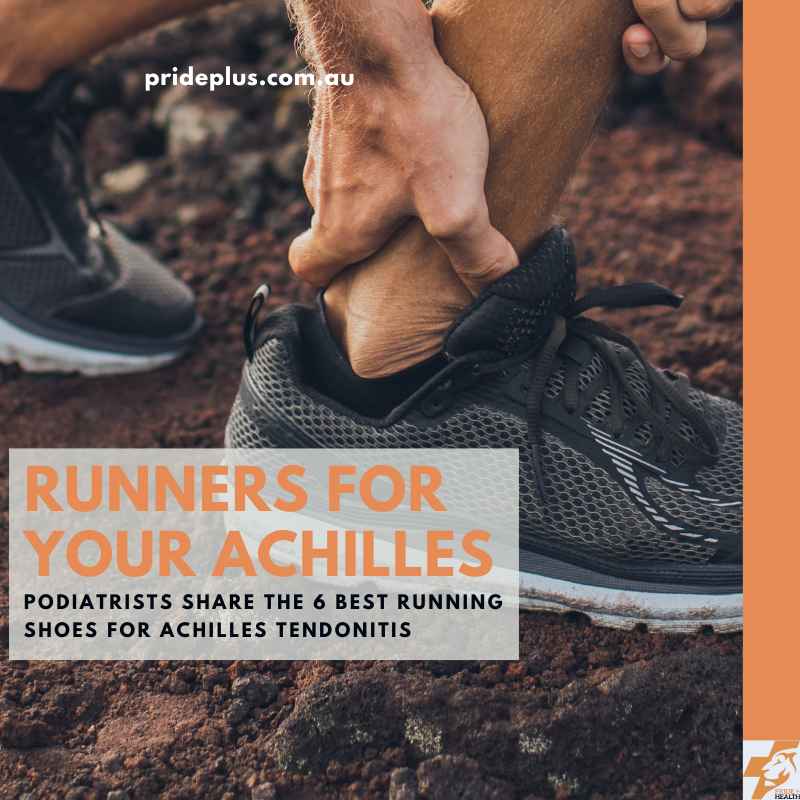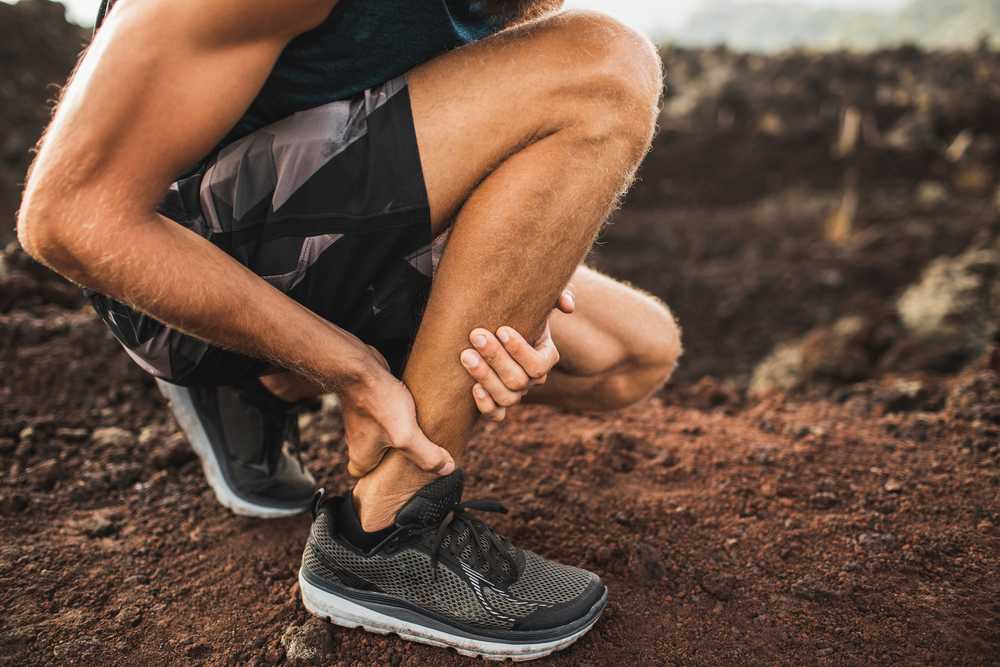Understanding Achilles Tendonitis: Causes and Symptoms
What Is Achilles Tendonitis?
Achilles tendonitis is an overuse injury that results in inflammation of the Achilles tendon, which connects your calf muscles to your heel bone. Symptoms can range from mild discomfort to severe pain, especially during activities like running, jumping, or even walking.
Causes of Achilles Tendonitis
Achilles tendonitis can stem from various factors, including:
- Overtraining: Increasing your mileage or intensity too quickly.
- Flat Feet: A flat arch can place undue stress on the Achilles tendon.
- Improper Footwear: Wearing shoes that lack support or cushioning can exacerbate the condition.
Symptoms to Look For
Common symptoms of Achilles tendonitis include:
- Pain along the back of the heel
- Swelling or tenderness around the tendon
- Stiffness, especially in the morning or after extended periods of inactivity
Key Features to Look for in Running Shoes for Achilles Tendonitis
Cushioning and Support
When it comes to choosing the right footwear, cushioning is paramount. Look for shoes featuring:
- Memory Foam: Molds to your foot shape, providing customized comfort.
- Gel Technology: Absorbs shock and reduces impact on the Achilles tendon.
Drop Height
The heel-to-toe drop is another critical factor. A higher drop (8-12mm) can help reduce strain on the Achilles tendon by elevating the heel. This design encourages a more natural foot motion.
Arch Support
Adequate arch support is crucial, especially for those with flat feet or fallen arches. Shoes with built-in arch support can reduce stress on the Achilles tendon, promoting a healthier running experience.
Flexibility
Shoes that offer a good balance between stability and flexibility are ideal. A too-stiff shoe can exacerbate pain, while overly flexible footwear may not provide enough support.
Lightweight Design
A lighter shoe can be beneficial, allowing for more efficient movement and reduced fatigue during runs. Look for brands that prioritize lightweight materials without compromising support.
Top Shoes for Achilles Tendonitis Running
Here’s our roundup of the best running shoes for Achilles tendonitis, based on real-world experiences, case studies, and user reviews.
1. ASICS Gel-Kayano 28
Overview
The ASICS Gel-Kayano 28 is well-known for its stability and cushioning, making it an excellent option for runners with Achilles tendonitis.
Features
- Cushioning: Gel technology for shock absorption
- Drop: 10mm heel-to-toe drop
- Support: Dynamic DuoMax™ support system for stability
Pros and Cons
| Pros | Cons |
|---|---|
| Excellent cushioning | Slightly heavier than competitors |
| Great arch support | Pricey for some consumers |
| Durable construction | May require a break-in period |
Real-World Experience
Many runners have reported significant pain reduction after switching to the Gel-Kayano 28, highlighting its impact-absorbing capabilities.
2. Brooks Adrenaline GTS 22
Overview
The Brooks Adrenaline GTS 22 combines support and comfort, making it a fantastic choice for runners suffering from Achilles tendonitis.
Features
- Cushioning: GuideRails® technology for holistic support
- Drop: 12mm heel-to-toe drop
- Support: Enhanced arch support
Pros and Cons
| Pros | Cons |
|---|---|
| Excellent support for overpronation | Some users find it too rigid |
| Lightweight design | Limited color options |
| Great durability | May feel narrow for wider feet |
Real-World Experience
Users have noted that the Adrenaline GTS 22 helped alleviate their Achilles pain, allowing for longer runs without discomfort.

3. Hoka One One Bondi 7
Overview
The Hoka One One Bondi 7 is famous for its plush cushioning and is ideal for recovery runs.
Features
- Cushioning: EVA foam midsole for supreme comfort
- Drop: 4mm heel-to-toe drop
- Support: Meta-Rocker technology for smooth transitions
Pros and Cons
| Pros | Cons |
|---|---|
| Exceptional cushioning | Bulky design |
| Lightweight for its size | Price point may be high |
| Great for recovery | Not ideal for speed work |
Real-World Experience
Many users rave about the Bondi 7 for its unparalleled cushioning, especially during recovery phases from injuries, including Achilles tendonitis.
Comparison Table: Quick Reference
| Shoe Model | Cushioning | Drop Height | Arch Support | Weight |
|---|---|---|---|---|
| ASICS Gel-Kayano 28 | Gel technology | 10mm | Dynamic DuoMax™ | Moderate |
| Brooks Adrenaline GTS 22 | GuideRails® support | 12mm | Enhanced | Light |
| Hoka One One Bondi 7 | EVA foam | 4mm | Meta-Rocker | Heavier |

Tips for Managing Achilles Tendonitis While Running
- Warm-Up Properly: Always warm up before running to prepare your muscles and tendons.
- Gradually Increase Distance: Avoid sudden increases in mileage to prevent aggravating your Achilles tendon.
- Incorporate Strength Training: Focus on strengthening your calf muscles to provide better support to the Achilles tendon.
- Use Orthotics: Consider using orthotic inserts for added arch support.
- Listen to Your Body: If you experience pain, don’t hesitate to take a break or seek medical advice.
FAQs: Answers to Your Top Questions
1. What type of shoe is best for Achilles tendonitis?
Shoes with excellent cushioning, proper arch support, and a higher heel-to-toe drop are typically the best for Achilles tendonitis.
2. Can I run with Achilles tendonitis?
While running may be possible, it’s essential to listen to your body and consult a healthcare professional before continuing any intense activity.
3. How can I tell if a shoe is right for me?
Always try on shoes at the end of the day when your feet are at their largest and walk or jog around in them. Pay attention to comfort and support.
4. How often should I replace my running shoes?
Most running shoes should be replaced every 300 to 500 miles, depending on wear and tear.
5. Can orthotics help with Achilles tendonitis?
Yes, custom orthotics can provide added support and alleviate pressure on the Achilles tendon.
6. Is a higher heel drop better for Achilles tendonitis?
Generally, shoes with a higher heel-to-toe drop can reduce strain on the Achilles tendon, making them a suitable option.
7. How do I know if my shoes are causing my Achilles pain?
If you consistently experience pain after runs, especially when wearing a specific pair of shoes, it’s likely they could be contributing to your discomfort.
8. Is it better to have a stiff or flexible shoe for Achilles tendonitis?
A balance is necessary; you want enough flexibility for comfort but sufficient stiffness for support.
9. What role does running form play in Achilles tendonitis?
Improper running form can place additional stress on the Achilles tendon. Consulting a professional for an assessment can be beneficial.
10. Should I rest completely while recovering from Achilles tendonitis?
Active recovery methods, such as low-impact exercises, can often be beneficial, but consult your healthcare provider for personalized advice.
11. Can I wear my shoes if they’re showing signs of wear?
Worn-out shoes can lead to improper support and increased risk of injuries, including Achilles tendonitis. Always be proactive about shoe replacement.

Conclusion: Find Your Perfect Pair
Achilles tendonitis doesn’t have to dictate your running journey. With the right shoes, you can continue to enjoy the thrill of running while allowing your body to heal. We hope this guide has helped you identify some of the best options available on the market today. Remember to prioritize comfort, support, and cushioning, and you’ll find a pair that fits your needs and keeps you running for many miles ahead!